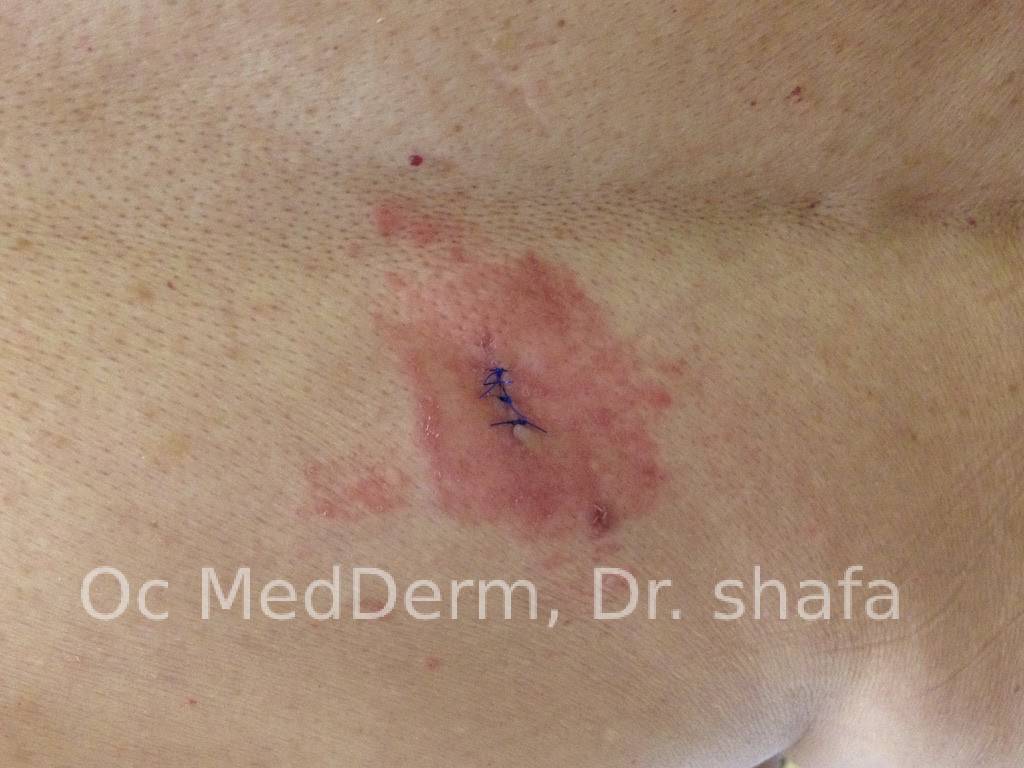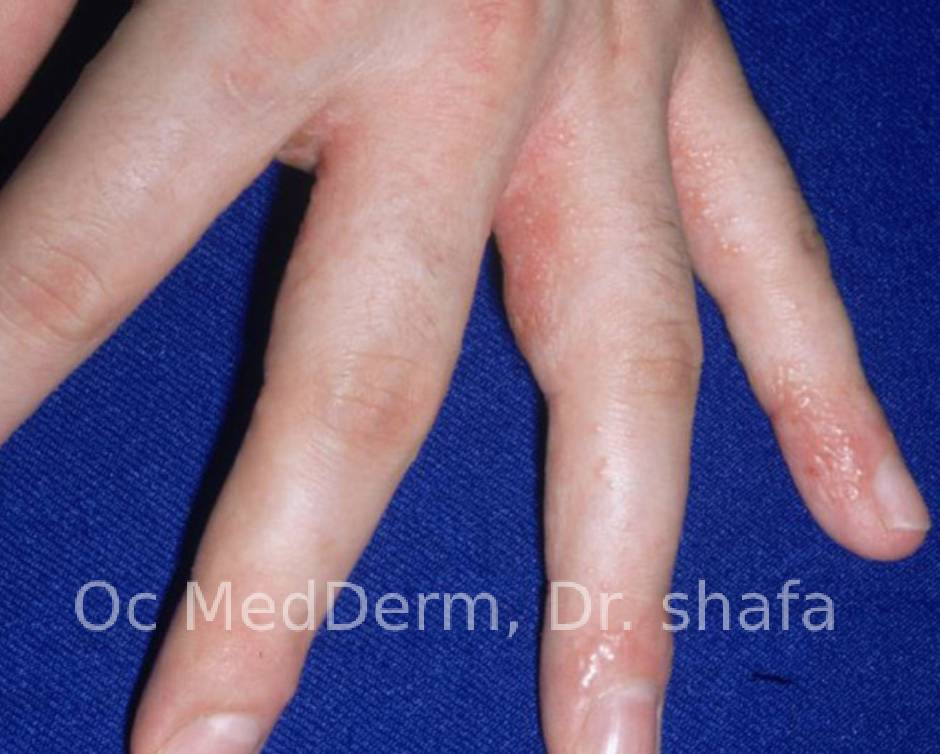Dermatitis
What is Dermatitis?
Dermatitis simply refers to inflammation of the skin. It is not one specific disease, but rather a term that encompasses any skin disease that causes skin to become inflamed. Although the majority of inflammatory skin diseases are auto-immune related, they can also be caused by other processes, such as infection or trauma.
The following are common type of dermatitis
- Eczema (atopic dermatitis)
- Asteatotic eczema
- Dyshidrotic eczema
- Nummular eczema
- Contact dermatitis
- Irritant contact dermatitis
- Allergic contact dermatitis
- Stasis dermatitis
- Seborrheic dermatitis
- Juvenile plantar dermatitis (JPD)
If you are suffering from any type of skin breakout (possibly dermatitis), Call us to make an appointment to see Dr. Shafa to define the type of dermatitis you have, explore treatment options and start the best treatment option to control your dermatitis.
What is Eczema?

Eczema refers to a group of diseases that can cause dermatitis. In fact, another name for eczema is atopic dermatitis. Eczema is a chronic condition, meaning that it will periodically flare throughout a person’s life. It presents as patches of rough, dry, skin that may itch, scale, crust, or ooze. It is not contagious, but it can be quite bothersome.
What is Seborrheic Dermatitis?

Seborrheic Dermatitis (SD) is a common recurring skin inflammation characterized by patches of red and scaly skin. It has a tendency to affect areas that have a high density of oil glands, such as the face, scalp, mid-chest, and armpits. On the face, it is often seen on the sides of the nose, along the laugh lines, under the eyebrows, or behind the ears. Dandruff is a mild form of seborrheic dermatitis of the scalp.
What is contact dermatitis?
There are two different types of contact dermatitis.

Irritant contact dermatitis is when contact with a substance irritates the skin physically, mechanical, or chemically. It is the most common type of contact dermatitis. Examples include rubber gloves/ latex allergy, water and wet work, bleach, soap, plant parts, dust and soil.

Allergic contact dermatitis occurs when contact with a particular substance activates the immune system of the body with a breakout 1-2 days after exposure. Common examples are a late reaction to poison ivy, ginkgo fruit, the skin of mangoes, nickel in jewelry, preservatives in foods, fragrances, hair dye, rubber and latex contact, elastic bandaids, and topical antibiotics.
What is Stasis dermatitis?

Stasis dermatitis or stasis eczema is a common dermatitis of legs caused by poor lower extremities circulations. It is a long term condition that usually occurs on the ankles but may spread to the knees.
What is Asteatotic eczema?

It is a form of eczema caused by dryness of the skin, usually the skin of legs. Older individuals are prone to this type of eczema especially in colder seasons, such as winter, when heater and dryness can exacerbate the eczema. Other factors are exposure to harsh detergents and irritants.
What is Dyshidrotic Eczema?


Dyshidrotic eczema is a type of eczema characterized by multiple, small, deep-seated blisters on the palms and bottom of feet especially along the sides of fingers and toes. It is caused by sweating of the hands or feet and can be very itchy, recurrent, and chronic.
What is Nummular eczema?


It is a chronic recurrent form of eczema that presents as single or multiple coin-shaped itchy patches located on lower extremities and less commonly on the trunk. Those patches typically range in size from 1-4 inches, and can be brown, pink, or red.
What is Juvenile plantar dermatitis (JPD)?

Also called JPD, juvenile plantar dermatitis is a form of eczema that affects the bottom of the feet of children age 3 to 24 years. JPD is generally caused by repetitive frictional movements, excessive sweating, or climatic changes. Athletes’ feet and allergic reactions to leather or synthetic socks and shoes can look similar to JPD.
Call us and make an appointment to see us for any type of skin breakout you might have.*
Other Treatments
Actinic Keratosis, a Pre-Skin Cancer! | Eczema | Excessive Sweating | Itching | Keratosis Pilaris | Psoriasis | Rash | Rosacea | Skin Discoloration | Vasculitis
Schedule a Consultation
